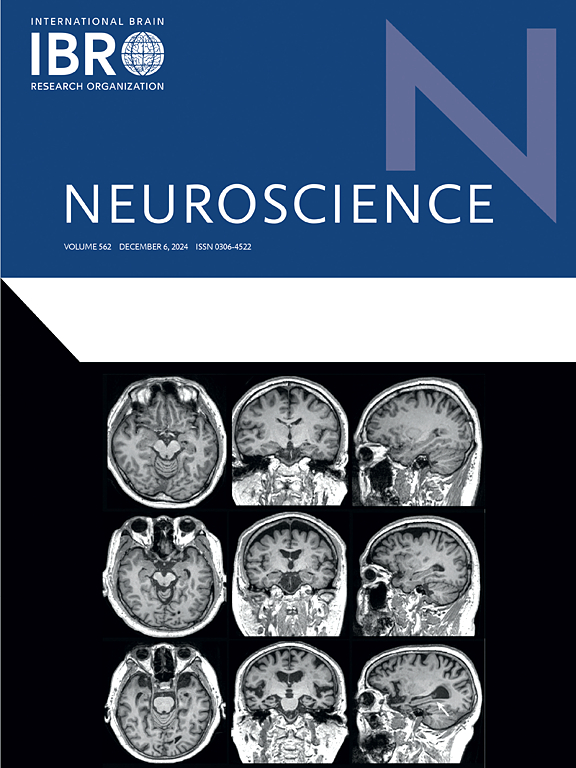Rag1−/− mice with T and B lymphocyte deficiency exhibit milder retinal inflammatory response and retinal ganglion cell injury after optic nerve crush
IF 2.9
3区 医学
Q2 NEUROSCIENCES
引用次数: 0
Abstract
Bourgeoning literature verified the essential contribution of neuroinflammation in optic nerve injury, here, we aim to investigate the effect of lymphocyte deficiency on retinal ganglion cells (RGCs) survival after optic nerve crush (ONC). 48 wide type (WT) and 48 Rag1−/− mice were used to establish the ONC model. AAV2-hSyn1-eGFP was employed to inject into the vitreous body to transfect RGCs 4 weeks before ONC modeling, the confocal scanning laser ophthalmoscopy was utilized to visualize the RGCs in vivo. RBPMS, Iba-1 and GFAP expression were detected by immunofluorescence. The expression of retinal glial biomarkers was detected by qRT-PCR, and the protein expression of occludin and CD3 was detected by WB. Electroretinography and optomotor response were used to evaluate the visual function. Our results showed that a milder RGC loss and GCC thickness decrease were found in Rag1−/− mice than in WT mice after ONC in vivo and in vitro (p < 0.05). The morphologic and molecular feature analyses of retinal glial cells showed that the lack of lymphocytes significantly inhibited the number and activation level of microglia after ONC (p < 0.05). Besides, Occludin was significantly decreased and CD3 was upregulated at week 4 after ONC in WT mice compared with Rag1−/− mice (p < 0.01). Visual function assessment showed a better visual condition in Rag1−/− mice with ONC at week 4 (p < 0.05). Altogether, Rag1−/− mice with lymphocyte deficiency exhibit less RGC loss, milder retinal glial activation and better visual function when compared with WT mice after ONC.

T和B淋巴细胞缺乏的Rag1−/−小鼠在视神经挤压后表现出较轻的视网膜炎症反应和视网膜神经节细胞损伤
越来越多的文献证实了神经炎症在视神经损伤中的重要作用,在这里,我们旨在研究淋巴细胞缺乏对视神经压迫(ONC)后视网膜神经节细胞(RGCs)存活的影响。采用48只WT型小鼠和48只Rag1−/−小鼠建立ONC模型。在ONC造模前4周,采用AAV2-hSyn1-eGFP注入玻璃体转染RGCs,用共聚焦扫描激光检眼镜观察RGCs的活体可视化。免疫荧光法检测RBPMS、Iba-1和GFAP的表达。qRT-PCR检测视网膜胶质生物标志物的表达,WB检测occludin和CD3蛋白的表达。采用视网膜电图和视动反应评价视功能。我们的研究结果表明,在体内和体外ONC后,Rag1 - / -小鼠的RGC丢失和GCC厚度减少比WT小鼠轻(p <;0.05)。视网膜胶质细胞形态学和分子特征分析表明,淋巴细胞的缺乏显著抑制ONC后小胶质细胞的数量和激活水平(p <;0.05)。此外,与Rag1−/−小鼠相比,ONC后第4周,WT小鼠Occludin显著降低,CD3上调(p <;0.01)。视觉功能评估显示,Rag1−/−ONC小鼠在第4周的视觉状况较好(p <;0.05)。总之,与WT小鼠相比,淋巴细胞缺乏的Rag1−/−小鼠在ONC后表现出更少的RGC丢失,更温和的视网膜胶质细胞激活和更好的视觉功能。
本文章由计算机程序翻译,如有差异,请以英文原文为准。
求助全文
约1分钟内获得全文
求助全文
来源期刊

Neuroscience
医学-神经科学
CiteScore
6.20
自引率
0.00%
发文量
394
审稿时长
52 days
期刊介绍:
Neuroscience publishes papers describing the results of original research on any aspect of the scientific study of the nervous system. Any paper, however short, will be considered for publication provided that it reports significant, new and carefully confirmed findings with full experimental details.
 求助内容:
求助内容: 应助结果提醒方式:
应助结果提醒方式:


